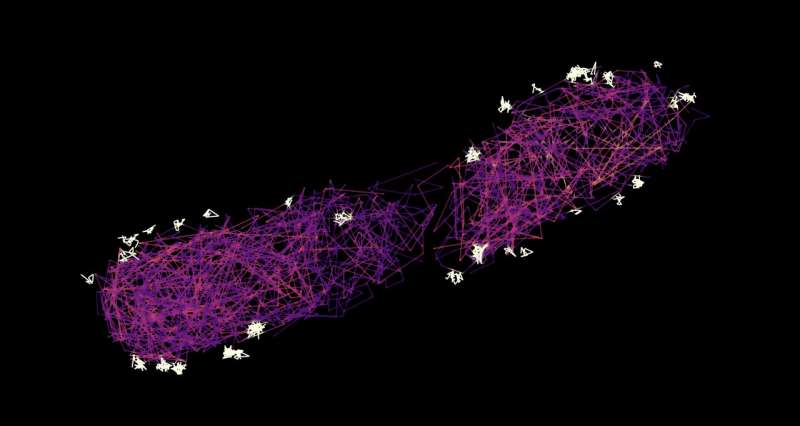This article has been reviewed according to Science X's editorial process and policies. Editors have highlighted the following attributes while ensuring the content's credibility:
fact-checked
peer-reviewed publication
trusted source
proofread
Pathogenic bacteria use molecular 'shuttle services' to fill their injection apparatus with the right product

Disease-causing bacteria of the genus Salmonella or Yersinia can use tiny injection apparatuses to inject harmful proteins into host cells, much to the discomfort of the infected person. However, it is not only with a view to controlling disease that researchers are investigating the injection mechanism of these so-called type III secretion systems also known as "injectisomes."
If the structure and function of the injectisome were fully understood, researchers could hijack it to deliver specific drugs into cells, such as cancer cells. In fact, the structure of the injectisome has already been elucidated. However, it remained unclear how the bacteria load their syringes so that the right proteins are injected at the right time.
Mobile components of the injectisome search for proteins
In a study published in Nature Microbiology, a team of scientists led by Andreas Diepold from the Max Planck Institute for Terrestrial Microbiology in Marburg and Ulrike Endesfelder from the University of Bonn has now been able to answer this question: mobile components of the injectisome comb through the bacterial cell in search of the proteins to be injected, so-called effectors. When they encounter an effector, they transport it like a shuttle bus to the gate of the injection needle.
"How proteins of the sorting platform in the cytosol bind to effectors and deliver the cargo to the export gate of the membrane-bound injectisome is comparable to the processes at a freight terminal," explains Stephan Wimmi, first author of the study as a postdoctoral researcher in Andreas Diepold's laboratory.
"We think that this shuttle mechanism helps to make the injection efficient and specific at the same time—after all, the bacteria have to inject the right proteins quickly to avoid being recognized and eliminated by the immune system, for example."
To gain this insight into the important loading mechanism of the injectisome, the researchers had to apply new techniques. "Conventional methods, which are normally used to detect that proteins bind to each other, did not work to answer this question—possibly because the effectors are only bound for a short time and then immediately injected," explains Andreas Diepold, research group leader at the Max Planck Institute and co-leader of the study. "That's why we had to analyze this binding in situ in the living bacteria."
"To measure these transient interactions, we made use of two novel approaches that work in living cells, proximity labeling and single-particle tracking," adds Ulrike Endesfelder, whose group worked on the study in three different locations—the Max Planck Institute in Marburg, Carnegie Mellon University in Pittsburgh, and at the University in Bonn.
Proximity labeling, in which a protein marks its immediate neighbors like a paintbrush, enabled them to show that the effectors in the bacterium bind to the mobile injectisome components. This binding was examined in more detail using single particle tracking, a high-resolution microscopy method that can follow individual proteins in cells. These methods, which the team refers to as "in situ biochemistry," i.e., biochemical investigations on site, made the breakthrough possible.
The researchers next want to use their method to investigate other mechanisms that bacteria use to cause infections. "The more we know about how bacteria use these systems during an infection, the better we can understand how we can influence them—be it to prevent infections or to modify the systems in order to use them in the fields of medicine or biotechnology," says Diepold.
More information: Cytosolic sorting platform complexes shuttle type III secretion system effectors to the injectisome in Yersinia enterocolitica., Nature Microbiology (2024). DOI: 10.1038/s41564-023-01545-1
Journal information: Nature Microbiology
Provided by Max Planck Society



















